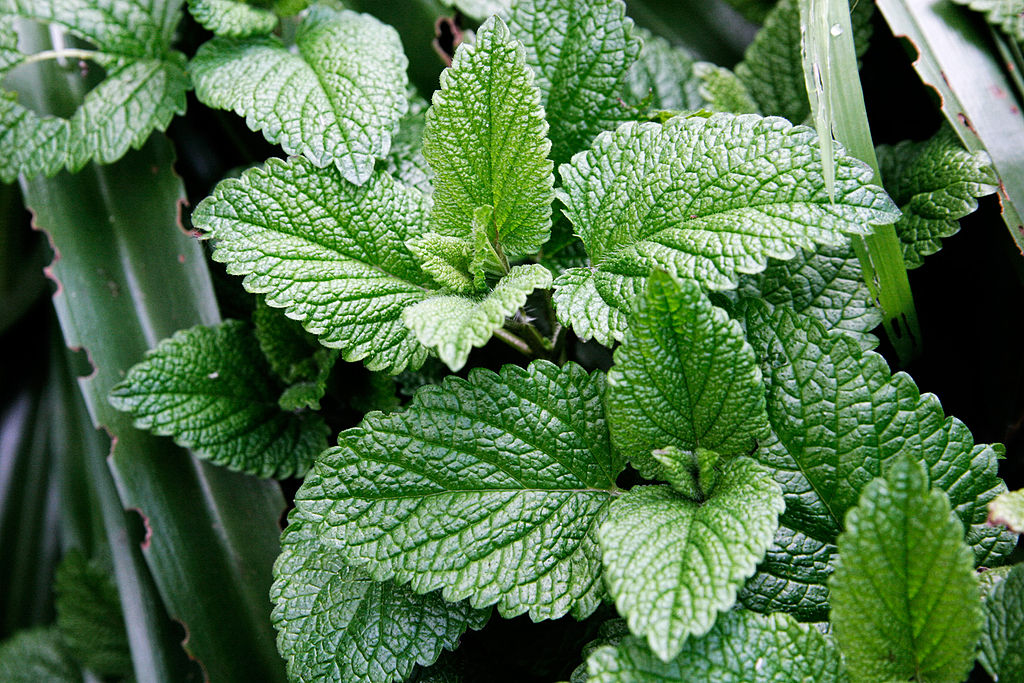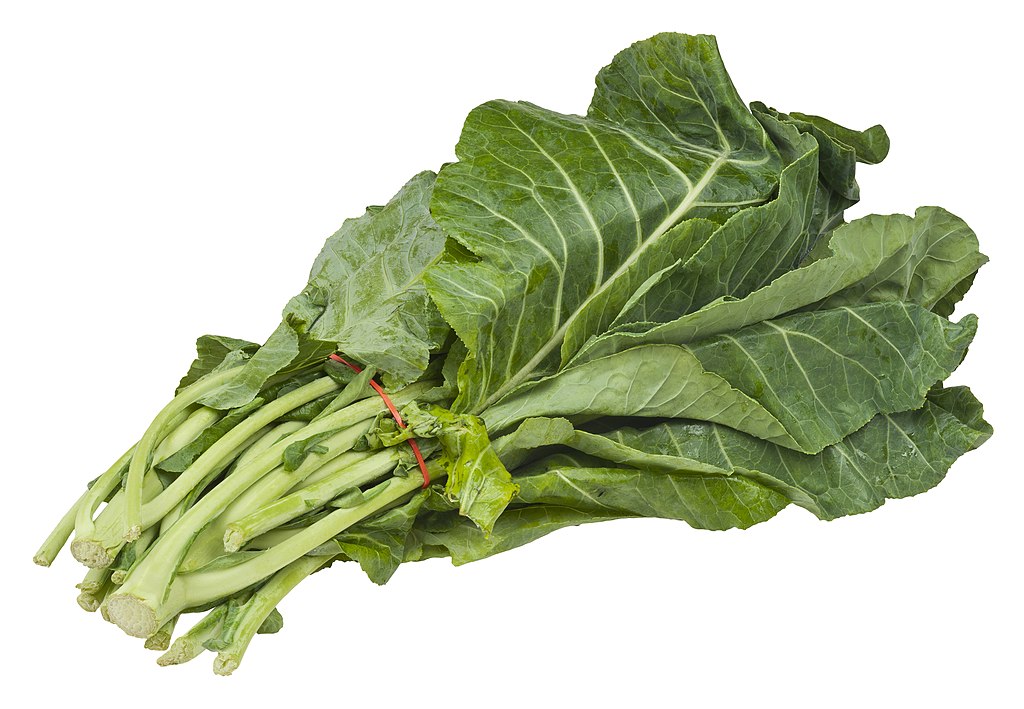Mint vs. Collard Greens
Nutrition comparison of Mint and Collard Greens
Ever wonder how your favorite foods stack up against each other in terms of nutrition?
We compared the nutritional contents of
mint
versus
collard greens
(100g each)
below using 2020 USDA and NIH data[1].
For a quick recap of significant nutrients and differences in mint and collard greens:
- Both collard greens and mint are high in Vitamin A, Vitamin C, calcium, dietary fiber and potassium.
- Collard green has 54% less calories than mint.
- Collard green has 64% less carbohydrates than mint.
- Collard green is an excellent source of Vitamin K.
- Mint has more niacin.
- Mint is an excellent source of iron.
USDA sources for nutritional information: Mint (Peppermint, fresh) and Collard Greens (Collards, raw) . Have a correction or suggestions? Shoot us an email.
Calories and Carbs
calories
Collard green has 54% less calories than mint - collard green has 32 calories per 100 grams and mint has 70 calories.
For macronutrient ratios, mint is lighter in protein, heavier in carbs and lighter in fat compared to collard greens per calorie. Mint has a macronutrient ratio of 18:72:10 and for collard greens, 31:55:14 for protein, carbohydrates and fat from calories.
Macro Ratios from Calories:
| Mint | Collard Greens | |
|---|---|---|
| Protein | 18% | 31% |
| Carbohydrates | 72% | 55% |
| Fat | 10% | 14% |
| Alcohol | ~ | ~ |
carbohydrates
Collard green has 64% less carbohydrates than mint - collard green has 5.4g of total carbs per 100 grams and mint has 14.9g of carbohydrates.
dietary fiber
Both collard greens and mint are high in dietary fiber. Mint has 100% more dietary fiber than collard green - collard green has 4g of dietary fiber per 100 grams and mint has 8g of dietary fiber.
sugar
Collard greens and mint contain similar amounts of sugar - collard green has 0.46g of sugar per 100 grams and mint does not contain significant amounts.
Protein
protein
Collard greens and mint contain similar amounts of protein - collard green has 3g of protein per 100 grams and mint has 3.8g of protein.
Fat
saturated fat
Both collard greens and mint are low in saturated fat - collard green has 0.06g of saturated fat per 100 grams and mint has 0.25g of saturated fat.
Vitamins
Vitamin C
Both collard greens and mint are high in Vitamin C. Collard green has 11% more Vitamin C than mint - collard green has 35.3mg of Vitamin C per 100 grams and mint has 31.8mg of Vitamin C.
Vitamin A
Both collard greens and mint are high in Vitamin A. Collard green has 18% more Vitamin A than mint - collard green has 251ug of Vitamin A per 100 grams and mint has 212ug of Vitamin A.
Vitamin E
Collard green has more Vitamin E than mint - collard green has 2.3mg of Vitamin E per 100 grams and mint does not contain significant amounts.
Vitamin K
Collard green is an excellent source of Vitamin K and it has more Vitamin K than mint - collard green has 437.1ug of Vitamin K per 100 grams and mint does not contain significant amounts.
The B Vitamins
Mint has more niacin. Both mint and collard greens contain significant amounts of thiamin, riboflavin, pantothenic acid, Vitamin B6 and folate.
| Mint | Collard Greens | |
|---|---|---|
| Thiamin | 0.082 MG | 0.054 MG |
| Riboflavin | 0.266 MG | 0.13 MG |
| Niacin | 1.706 MG | 0.742 MG |
| Pantothenic acid | 0.338 MG | 0.267 MG |
| Vitamin B6 | 0.129 MG | 0.165 MG |
| Folate | 114 UG | 129 UG |
Minerals
calcium
Both collard greens and mint are high in calcium. Mint has a little more calcium (5%) than collard green by weight - collard green has 232mg of calcium per 100 grams and mint has 243mg of calcium.
iron
Mint is an excellent source of iron and it has 981% more iron than collard green - collard green has 0.47mg of iron per 100 grams and mint has 5.1mg of iron.
potassium
Both collard greens and mint are high in potassium. Mint has 167% more potassium than collard green - collard green has 213mg of potassium per 100 grams and mint has 569mg of potassium.
Antioxidants and Phytonutrients
flavonoids
Naturally occuring in fruits and vegetables, flavonoids are associated with many health benefits and used in a variety of medicinal and pharmaceutical applications. [2][3]
For specific flavonoid compounds, mint has more apigenin and luteolin than collard green per 100 grams, however, collard green contains more kaempferol and quercetin than mint per 100 grams.
| Mint | Collard Greens | |
|---|---|---|
| apigenin | 5.39 mg | ~ |
| luteolin | 12.66 mg | 0.08 mg |
| kaempferol | ~ | 8.74 mg |
| Quercetin | ~ | 2.57 mg |
Omega-3 and Omega-6
omega 3s
For omega-3 fatty acids, mint has more alpha linoleic acid (ALA) than collard green per 100 grams.
| Mint | Collard Greens | |
|---|---|---|
| alpha linoleic acid | 0.435 G | 0.108 G |
| Total | 0.435 G | 0.108 G |
omega 6s
Comparing omega-6 fatty acids, both mint and collard greens contain significant amounts of linoleic acid.
| Mint | Collard Greens | |
|---|---|---|
| linoleic acid | 0.069 G | 0.082 G |
| other omega 6 | ~ | 0.002 G |
| Total | 0.069 G | 0.084 G |
Customize your serving size
The comparison below is by weight, but sometimes 100g isn't that intuitive of a measurement for food. View a custom portion comparison (e.g. cups, oz, package).
You can try adding or subtracting the amount of either Mint or Collard Greens .
Note: The specific food items compared are: Mint (Peppermint, fresh) and Collard Greens (Collards, raw) .
Mint g
()
|
Daily Values (%) |
Collard Greens g
()
|
|||||
|---|---|---|---|---|---|---|---|
| KCAL % |
|
5% | calories | 5% |
|
KCAL % | |
| G % |
|
5% | carbohydrates | 5% |
|
G % | |
| G % |
|
5% | dietary fiber | 5% |
|
G % | |
| G | 5% | sugar | 5% | G | |||
| G % |
|
5% | total fat | 5% |
|
G % | |
| G % |
|
5% | saturated fat | 5% |
|
G % | |
| G | 5% | monounsaturated fat | 5% | G | |||
| G | 5% | polyunsaturated fat | 5% | G | |||
| G | 5% | trans fat | 5% | G | |||
| MG | 5% | cholesterol | 5% | MG | |||
| MG % |
|
5% | sodium | 5% |
|
MG % | |
| 5% | Vitamins and Minerals | 5% | |||||
| UG % |
|
5% | Vitamin A | 5% |
|
UG % | |
| MG % |
|
5% | Vitamin C | 5% |
|
MG % | |
| IU % |
|
5% | Vitamin D | 5% |
|
IU % | |
| MG % |
|
5% | calcium | 5% |
|
MG % | |
| MG % |
|
5% | iron | 5% |
|
MG % | |
| MG % |
|
5% | magnesium | 5% |
|
MG % | |
| MG % |
|
5% | potassium | 5% |
|
MG % | |
| MG % |
|
5% | thiamin (Vit B1) | 5% |
|
MG % | |
| MG % |
|
5% | riboflavin (Vit B2) | 5% |
|
MG % | |
| MG % |
|
5% | niacin (Vit B3) | 5% |
|
MG % | |
| MG % |
|
5% | Vitamin B6 | 5% |
|
MG % | |
| MG % |
|
5% | pantothenic acid (Vit B5) | 5% |
|
MG % | |
| UG % |
|
5% | folate (Vit B9) | 5% |
|
UG % | |
| UG % |
|
5% | Vitamin B12 | 5% |
|
UG % | |
| MG % |
|
5% | Vitamin E | 5% |
|
MG % | |
| UG % |
|
5% | Vitamin K | 5% |
|
UG % | |
| G % |
|
5% | protein | 5% |
|
G % | |
| UG % |
|
5% | biotin (Vit B7) | 5% |
|
UG % | |
| MG % |
|
5% | choline | 5% |
|
MG % | |
| MG % |
|
5% | chlorine | 5% |
|
MG % | |
| UG % |
|
5% | chromium | 5% |
|
UG % | |
| MG % |
|
5% | copper | 5% |
|
MG % | |
| UG % |
|
5% | fluoride | 5% |
|
UG % | |
| UG % |
|
5% | iodine | 5% |
|
UG % | |
| MG % |
|
5% | manganese | 5% |
|
MG % | |
| UG % |
|
5% | molybdenum | 5% |
|
UG % | |
| MG % |
|
5% | phosphorus | 5% |
|
MG % | |
| UG % |
|
5% | selenium | 5% |
|
UG % | |
| MG % |
|
5% | zinc | 5% |
|
MG % | |
| G | 5% | Water | 5% | G | |||
| G | 5% | Starch | 5% | G | |||
| G | 5% | Alcohol | 5% | G | |||
FAQ
Does collard greens or mint contain more calories in 100 grams?Collard green has 50% less calories than mint - collard green has 32 calories in 100g and mint has 70 calories.
Is collard greens or mint better for protein?
Collard greens and mint contain similar amounts of protein - collard green has 3g of protein per 100 grams and mint has 3.8g of protein.
Does collard greens or mint have more carbohydrates?
By weight, collard green has 60% fewer carbohydrates than mint - collard green has 5.4g of carbs for 100g and mint has 14.9g of carbohydrates.
Does collard greens or mint contain more calcium?
Both collard greens and mint are high in calcium. Mint has a little more calcium ( 10%) than collard green by weight - collard green has 232mg of calcium in 100 grams and mint has 243mg of calcium.
Does collard greens or mint contain more iron?
Mint is an abundant source of iron and it has 980% more iron than collard green - collard green has 0.47mg of iron in 100 grams and mint has 5.1mg of iron.
Does collard greens or mint contain more potassium?
Both collard greens and mint are high in potassium. Mint has 170% more potassium than collard green - collard green has 213mg of potassium in 100 grams and mint has 569mg of potassium.

